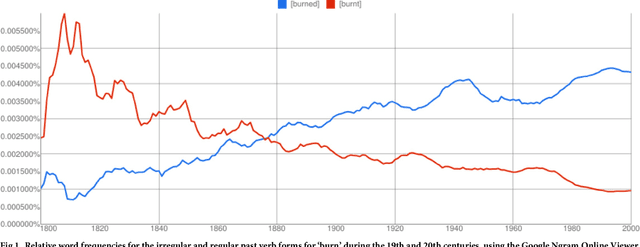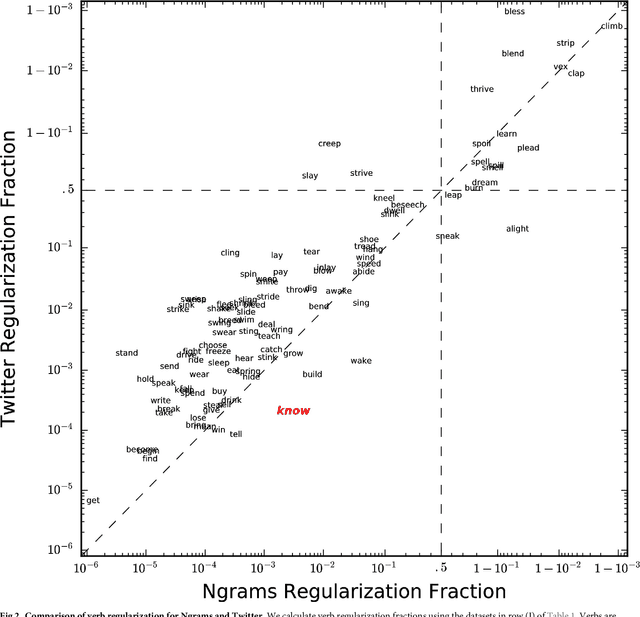Tyler J. Gray
Hahahahaha, Duuuuude, Yeeessss!: A two-parameter characterization of stretchable words and the dynamics of mistypings and misspellings
Jul 09, 2019



Abstract:Stretched words like `heellllp' or `heyyyyy' are a regular feature of spoken language, often used to emphasize or exaggerate the underlying meaning of the root word. While stretched words are rarely found in formal written language and dictionaries, they are prevalent within social media. In this paper, we examine the frequency distributions of `stretchable words' found in roughly 100 billion tweets authored over an 8 year period. We introduce two central parameters, `balance' and `stretch', that capture their main characteristics, and explore their dynamics by creating visual tools we call `balance plots' and `spelling trees'. We discuss how the tools and methods we develop here could be used to study the statistical patterns of mistypings and misspellings, along with the potential applications in augmenting dictionaries, improving language processing, and in any area where sequence construction matters, such as genetics.
English verb regularization in books and tweets
Mar 26, 2018



Abstract:The English language has evolved dramatically throughout its lifespan, to the extent that a modern speaker of Old English would be incomprehensible without translation. One concrete indicator of this process is the movement from irregular to regular (-ed) forms for the past tense of verbs. In this study we quantify the extent of verb regularization using two vastly disparate datasets: (1) Six years of published books scanned by Google (2003--2008), and (2) A decade of social media messages posted to Twitter (2008--2017). We find that the extent of verb regularization is greater on Twitter, taken as a whole, than in English Fiction books. Regularization is also greater for tweets geotagged in the United States relative to American English books, but the opposite is true for tweets geotagged in the United Kingdom relative to British English books. We also find interesting regional variations in regularization across counties in the United States. However, once differences in population are accounted for, we do not identify strong correlations with socio-demographic variables such as education or income.
 Add to Chrome
Add to Chrome Add to Firefox
Add to Firefox Add to Edge
Add to Edge